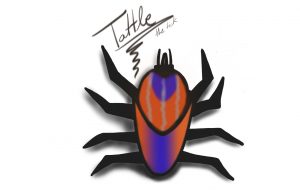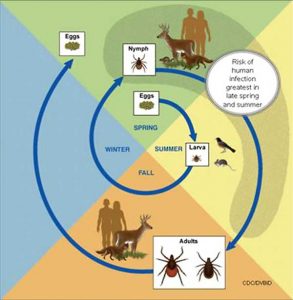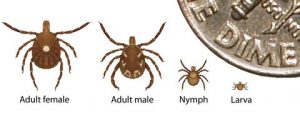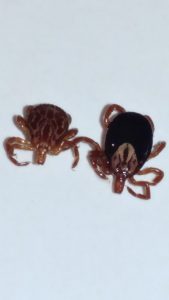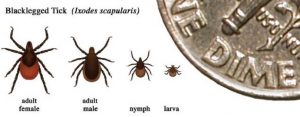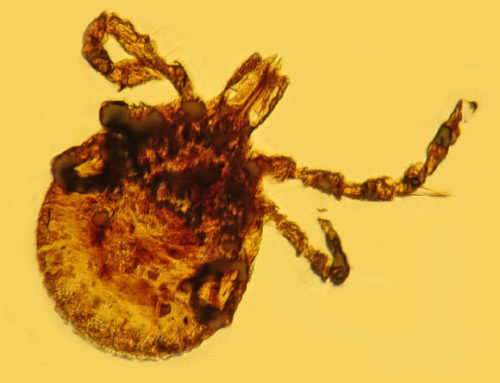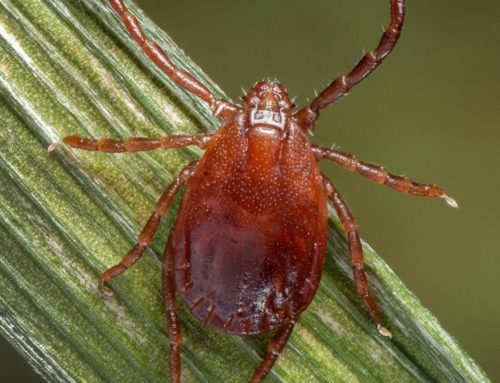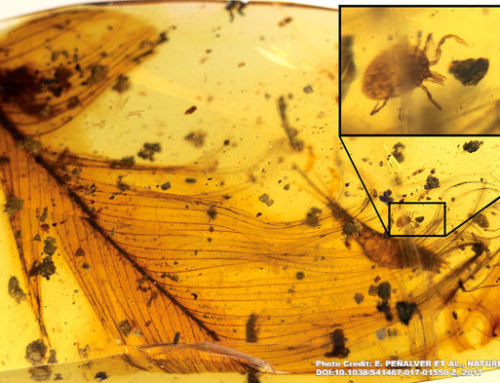You know what would be super useful information to know?
How to ID ticks of course! Imagine it, you are out and about… and BAM! There is a tick crawling on your shirt. Naturally you would want to know what type of tick it is right? Knowing the types of ticks out there can help you determine what diseases you may want to be on the lookout for if one bites you. Well no problem, let’s get started on our journey through the tick family tree!
Hard Shelled Tick vs Soft Shelled Tick
Chances are a tick you encounter is going to be a hard shelled tick, so we will focus on them in this blog. Soft shelled ticks like caves and abandoned cabins. For more information on soft shelled ticks check out my past blog “It’s a Hard-Shelled Life for Us!”
Ticks have Life stages?
Well did you just emerge from an egg as a fully fledged adult? No! Wait humans don’t hatch from eggs? O well, anyway ticks also have life stages so lets talk briefly about them.
LARVA – has 6 legs, first life stage that hatches from an egg. Feeds then molts to nymph.
NYMPH – has 8 legs, second life stage. Will feed and engorge then molt to adult. Do not have a sex. Nymph ticks are more likely to transmit a disease to a human since you are less likely to see them!
ADULT – has 8 legs. Can determine sex by using the “scutum” (see below if you don’t know what a scutum is)…
Female vs Male Ticks
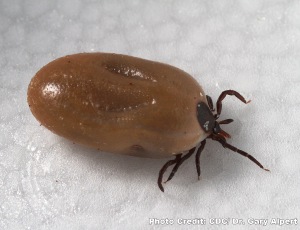
This is a female tick that is engorged. Note how the “scutum” or the back shell of the tick is the very dark area behind the head. The female tick has a half scutum to allow the abdomen to swell when feeding.
Why do we want to know female vs male ticks? Female ticks are more likely to stay attached longer as they swell with blood to create eggs. Male ticks will bite and swell with some blood but not to the extent of females. So with hard shelled ticks the best way to determine male vs female is to look at the “scutum” or the shell on the back of the tick. A male tick has a complete scutum but a female tick has a half scutum that allows it swell when feeding.
Common Illinois Tick Species of Human Concern
So we have discussed some logistics on ticks so let’s go talk about some specific species. It is important to realize that not every single tick of a species will be carrying a disease. Ticks are individuals and it depends on if the tick has been exposed to the disease! But we can discuss which species of ticks are known to carry and transmit certain diseases.
The Lonestar Tick (Amblyomma americanun)
- in general the lonestar tick has long mouthparts (called “palps”).
- female tick = has a spot at the end of the half scutum, so you see what is described as a “lone star.”
- male tick = plain brown, you do not see a star.
- Diseases: Ehrlichia, Tularemia, Southern Tick-Associated Rash Illness “STARI”, and for domestic cats Cytauxzoon felis “Bobcat Fever”
The Gulf Coast Tick (Amblyomma maculatum)
- just like the lonestar tick this tick also has long mouthparts or palps, generally more orange-brown and “metallic.” Otherwise, the Gulf Coast Tick can look similar to the American Dog Tick.
- female tick = has a white halo on its half scutum.
- male tick = has white/silver streaks down the scutum.
- Diseases: Rickettsiosis, and for dogs Hepatozoon americanum “Canine Hepatozoonosis”
Photo Credit: I-TICK. Depicted here is a male and female adult Gulf Coast Tick.
American Dog Tick (Dermacentor variabilis)
- in general this tick can look like the Gulf Coast Tick but is a darker brown and not as “metallic” but also the mouthparts (aka palps) are shorter.
- female tick = has a white halo.
- male tick = has white/silver streaks down the scutum.
- Diseases: Rocky Mountain Spotted Fever, Tularemia
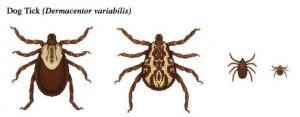
Photo Credit: CDC. Depicts the (left to right) female, male, nymph, and larva of the American Dog Tick.
Blacklegged Tick or Deer Tick (Ixodes scapularis)
- in general this tick is a darker brown to black on the scutum and legs.
- female tick = has a orange abdomen.
- male tick = more all brown to black due to the full scutum.
- Diseases: Lyme disease, Anaplasmosis, Babesiosis, and Powassan Disease
Tattle the Tick signing off!
Well that was just a quick walk-through on some of my cousins known to pester you humans in Illinois. There are plenty of ticks out there and you should check out the CDC tickborne disease and tick ID webpage for more information!
Until next week,
